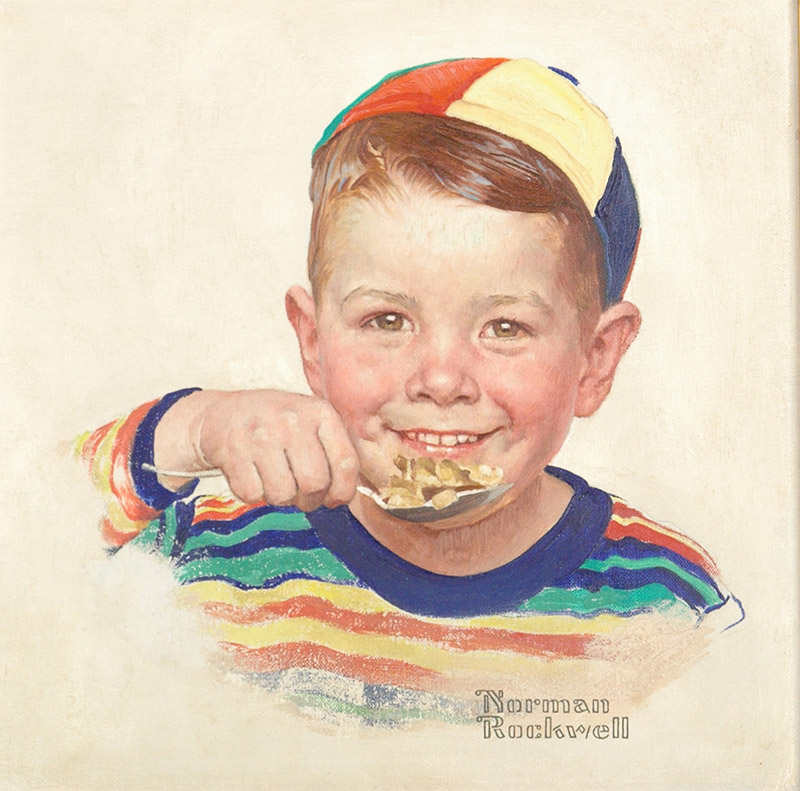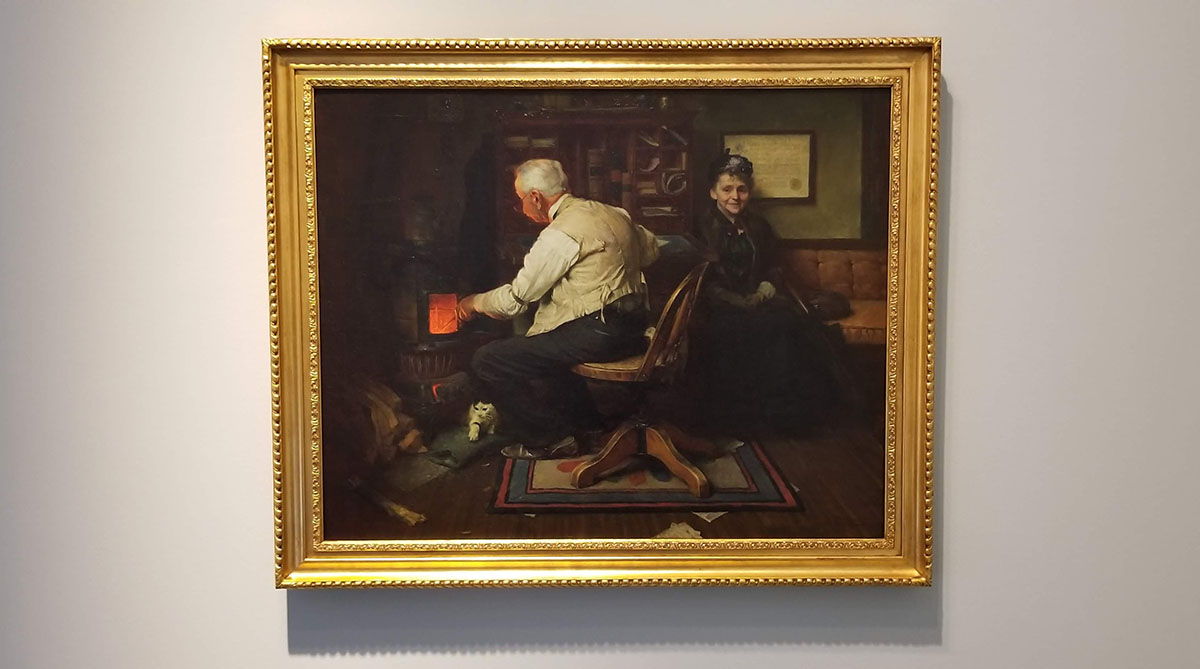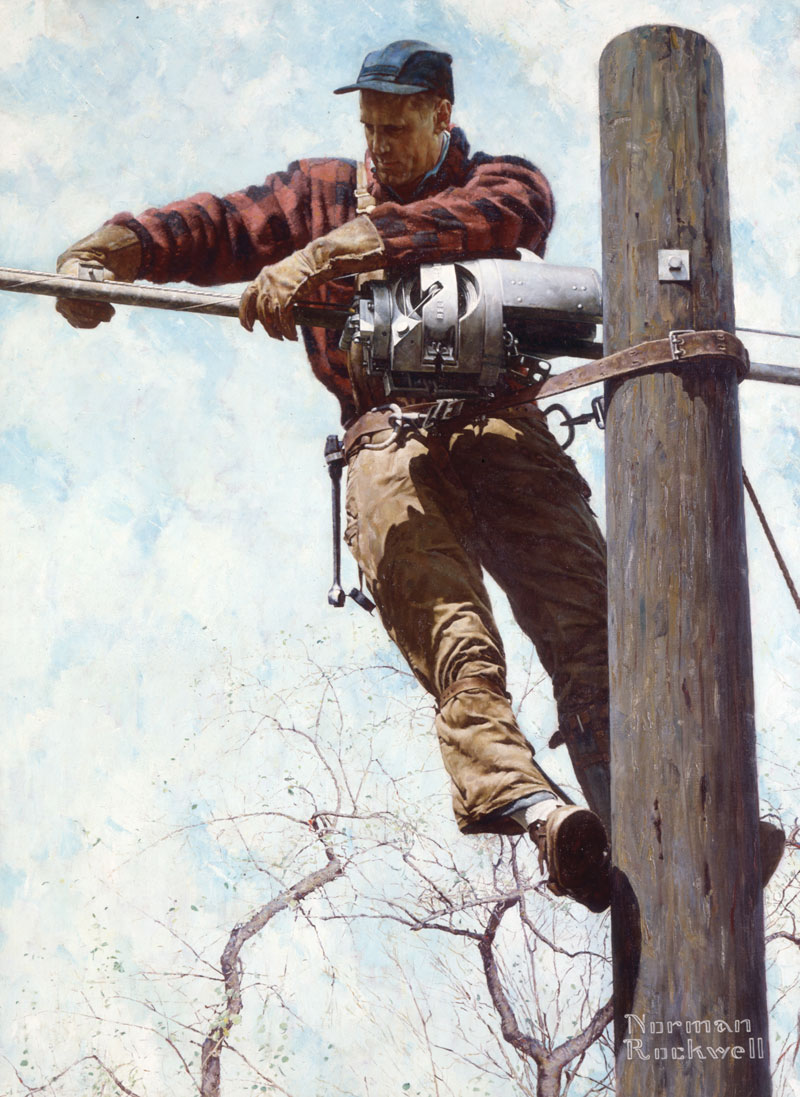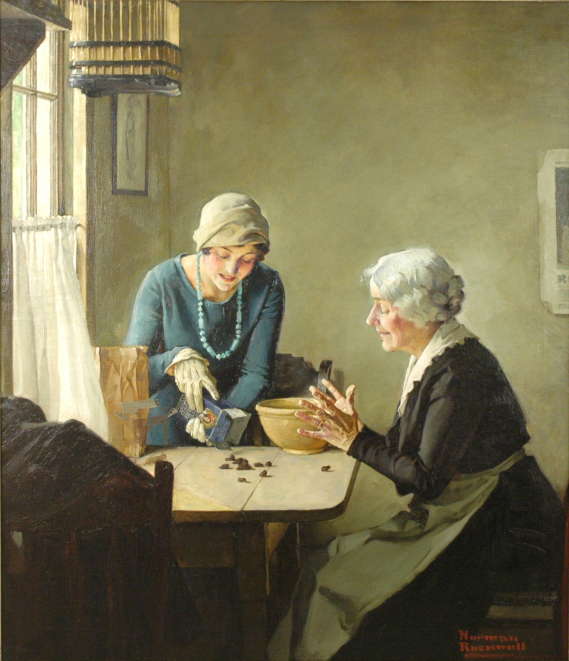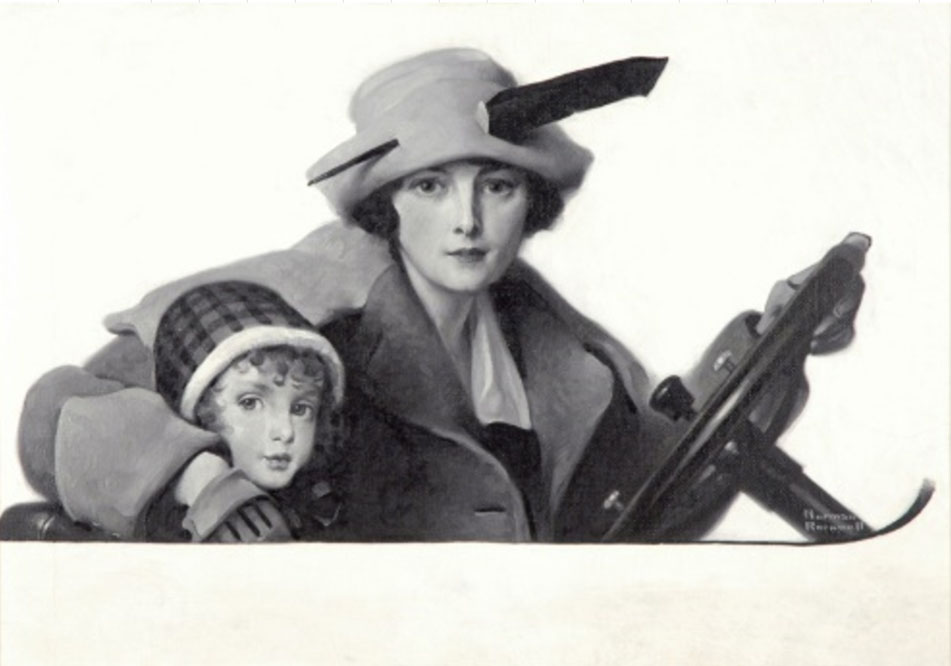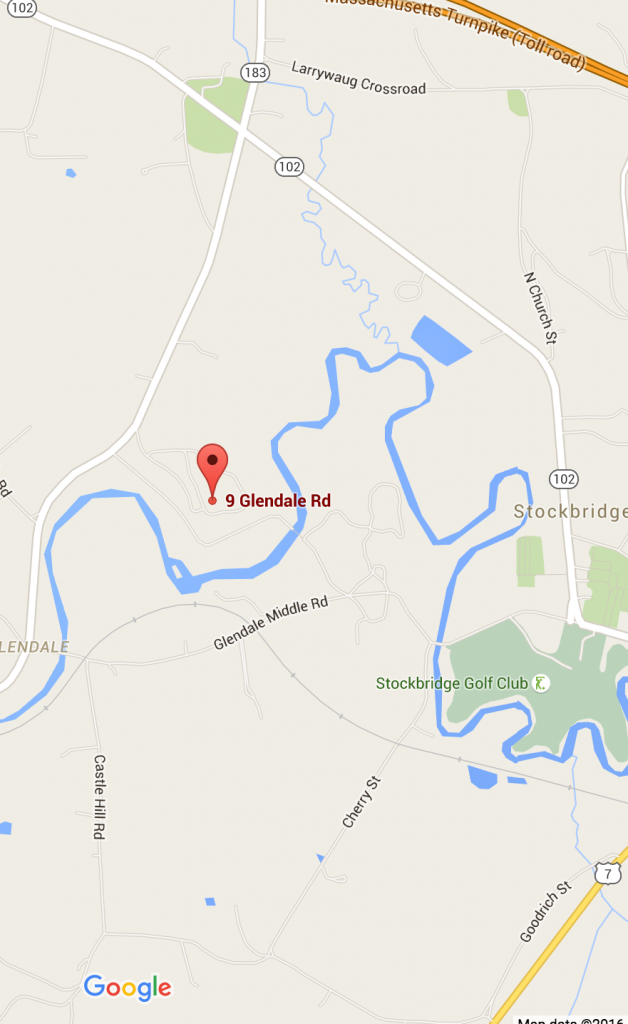Norman Rockwell: The Art of Persuasion
“No matter how beautiful an advertising picture may be, if it does not sell the product which it advertises, it is a failure.”
—Norman Rockwell
While taking classes at New York’s Art Students League in 1911 and 1912, Rockwell made a pact with his classmates “never to do advertising jobs,” which they considered more commercial than magazine illustration. But the artist admitted that this promise was quickly broken. Rockwell’s narrative style lent itself to advertising, and George Lorimer, editor of The Saturday Evening Post, advised him to charge double the fee that he received for a Post cover.
Honesty, artistry, and integrity were qualities that were ascribed to Rockwell, making collaboration with the artist appealing for many companies. Descriptive words and phrases like “distinguished,” “noted,” “American Legacy,” “elegant taste and discrimination,” “unexcelled craftsmanship,” and “accustomed to the finest” made their way into advertisements that showcased Rockwell’s art. During his prolific career, he accepted commissions from more than one-hundred-fifty corporations, including Ford Motor Company, Pan American Airlines, Budweiser, Del Monte, Sun-Maid, and many more.
Rockwell categorized advertising illustration into two types – the direct approach, a picture of the target audience enjoying the product; and institutional, an image showcasing the company’s good will. He opined that some commissions limited the illustrator’s originality due to the advertising agency’s layout requirements and was disheartened when his artwork required changes. As Rockwell gained success, he accepted fewer advertising assignments and concentrated on cover and story illustrations work, which allowed him more creative freedom.
About the Artist
Born in New York City in 1894, Norman Rockwell always wanted to be an artist. At age 14, Rockwell enrolled in art classes at The New York School of Art (formerly The Chase School of Art). Two years later, in 1910, he left high school to study art at The National Academy of Design. He soon transferred to The Art Students League, where he studied with Thomas Fogarty and George Bridgman. Fogarty’s instruction in illustration prepared Rockwell for his first commercial commissions. From Bridgman, Rockwell learned the technical skills on which he relied throughout his long career. Learn more…
MEDIA
American Chronicles: The Art of Norman Rockwell (Remastered)
Published: December 12, 2017
Peter Rockwell on Vermeer’s “View of Delft”
Recorded: 1993
VENUE(S)
Norman Rockwell Museum, Stockbridge, MA July 29 – October 31, 2021
DIRECTIONS
Norman Rockwell Museum
9 Glendale Road Route 183
Stockbridge, MA 01262
413-931-2221
Download a Printable version of Driving Directions (acrobat PDF).
Important note: Many GPS and online maps do not accurately place Norman Rockwell Museum*. Please use the directions provided here and this map image for reference. Google Maps & Directions are correct! http://maps.google.com/
* Please help us inform the mapping service companies that incorrectly locate the Museum; let your GPS or online provider know and/or advise our Visitor Services office which source provided faulty directions.


